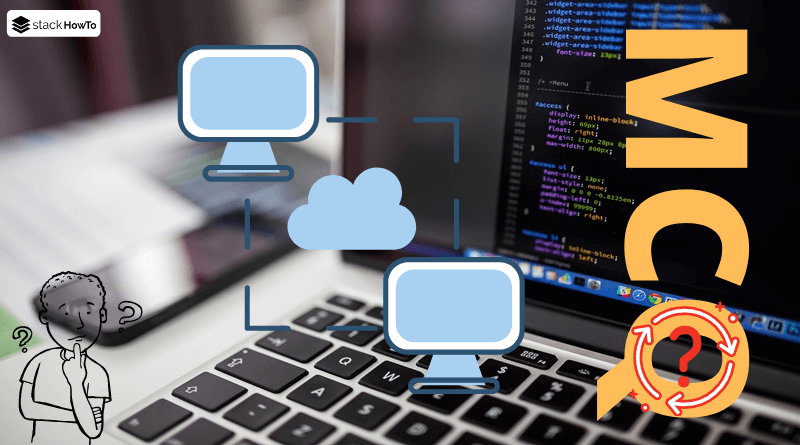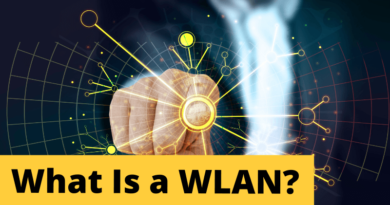TCP/IP Model
In this tutorial, we are going to see What does mean TCP/IP Model in Computer Networks? TCP/IP is a suite of protocols. TCP/IP stands for “Transmission Control Protocol/Internet Protocol”. It comes from the names of the two major protocols of the protocol suite, i.e. TCP and IP.
TCP/IP represents in a way the set of communication rules on the Internet and is based on the notion of IP addressing, which means providing an IP address to each machine on the network in order to be able to route data packets. Since the TCP/IP Model was originally created for military purposes, it is designed to meet a number of criteria, including:
- Splitting messages into packets;
- Use of an address system;
- Routing of data on the network;
- Controlling data transmission errors.
Understanding all the TCP/IP protocols is not essential for a simple user, just as a television viewer does not need to know how his television set works, nor how audiovisual networks work. However, this knowledge is necessary for people who want to manage or maintain a TCP/IP network.
TCP/IP is a layered model:
In order to be able to apply the TCP/IP model to any machine, i.e. independently of the operating system, the TCP/IP protocol system has been decomposed into several layers, each performing a specific task. Moreover, these layers perform these tasks one after the other in a precise order, so we have a layered system, which is why we speak of a layered model.
The term layer is used to refer to the fact that the data that transit on the network crosses several levels of protocols. Thus, the data (packets of information) which circulate on the network are successively treated by each layer, which comes to adds an element of information (called a header) then is transmitted to the following layer.
The TCP/IP model is very close to the OSI model (a model with 7 layers) which was developed by the International Organization of Standards (ISO) to standardize communications between computers.

Image source: www.wikimedia.org
Network Access Layer
The network access layer is the first layer of the TCP/IP stack, it gives the ability to access a physical network whatever it is, that is to say, the resources to implement in order to transmit data via a network.
Thus, the network access layer contains all the specifications concerning the transmission of data on a physical network, whether it is a local network (token ring, ethernet, FDDI), a connection to a telephone line or any type of link to a network. It supports the following concepts:
- Data routing on the link
- Coordination of data transmission (synchronization)
- Data format
- Signal conversion (analog/digital)
- Error check
- …
Fortunately, all these specifications are transparent to the user, because all these tasks are in fact performed by the operating system, as well as the hardware drivers used to connect to the network (e.g.: network card driver).
Internet layer:
The Internet layer is the “most important” layer because it defines the datagrams and manages the IP addressing.
It allows routing of datagrams (data packets) to remote machines as well as the management of their fragmentation and their assembly at reception.
The Internet layer contains 5 protocols:
- The IP protocol
- The ARP protocol
- The ICMP protocol
- The RARP protocol
- The IGMP protocol
The first three protocols are the most important protocols of this layer…
Transport layer:
The protocols of the previous layers made it possible to send information from one machine to another. The transport layer allows applications running on remote machines to communicate. The problem consists in identifying these applications.
Indeed, depending on the machine and its operating system, the application can be a program, a task, a process…
Moreover, the name of the application can vary from one system to another, which is why an identification number has been set up in order to associate a type of application with a type of data, these identifiers are called ports.
The transport layer contains two protocols allowing two applications to exchange data independently of the type of network used:
- TCP, is a connection-oriented protocol that provides error control
- UDP, a non-connection oriented protocol with archaic error control
Application Layer:
The application layer is the layer located at the top of the TCP/IP protocol layers. It contains network applications that allow communication with the lower layers.
The software of this layer communicates thanks to one of the two protocols of the lower layer (the transport layer), i.e. TCP or UDP.
The applications of this layer are of different types, but most of them are network services, i.e. applications provided to the user to interface with the operating system. They can be classified according to the services they provide:
- File management (transfer) and printing services
- Network connection services
- Remote connection services
- Various Internet utilities





